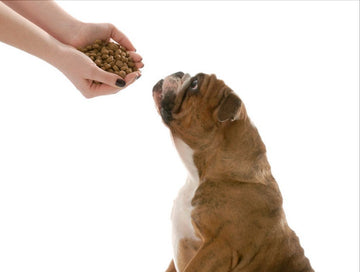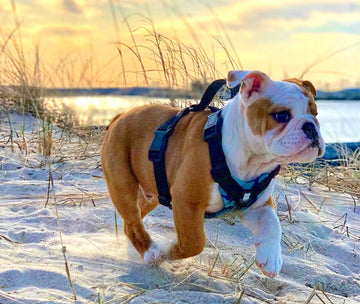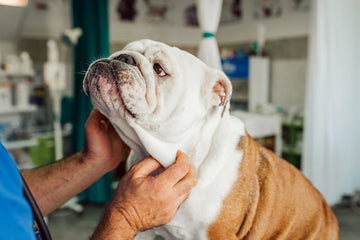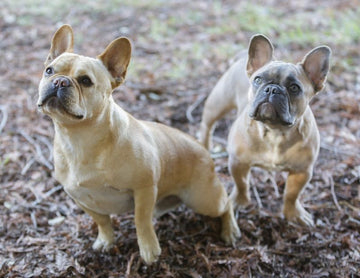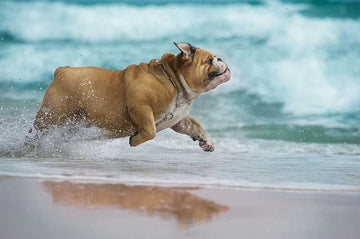Bulldogs love to eat—and they’ll eat just about anything if you let them. Whether you’ve got an English, French, American, Victorian, or a mix, the wrong diet (or just too much of it) can lead to skin issues, stomach upset, weight gain, and stinky breath. These six simple rules will keep your Bully healthy, comfortable, and happy at mealtime.
RULE #1: Absolutely No People Food
No table scraps, no “special bites,” and try to keep crumbs off the floor. If your Bulldog never learns that your food is up for grabs, begging won’t become a habit. Random people food is a common trigger for bad breath, gas/diarrhea, and itchy skin. It also teaches picky eating and crowds out balanced nutrition.
- Feed only their dog food and approved treats.
- Ask family/guests to follow the same rule—consistency wins.
RULE #2: Choose High-Quality Food (and the Right Amount)
Great nutrition pays for itself in fewer vet visits and better daily comfort. Many Bulldogs do well on lamb, fish, or beef recipes. Chicken can be an issue for some (not all). Look for a complete & balanced formula with:
- Animal proteins as the first ingredients (easy to digest, great amino acid profile)
- A blend of omega fatty acids for skin/coat
- Natural fiber for healthy digestion
- Glucosamine/chondroitin for joint support
- DHA (especially helpful for puppies)
- No corn, wheat, or soy if your Bully is sensitive
Feeding guidelines on bags are starting points. Many Bulldogs need less than the chart suggests. For example, our 60-lb female thrives on about 2 cups per day (split AM/PM). Watch body condition and energy levels and adjust by ¼ cup at a time. If you’re unsure, ask your vet to help set a target weight and daily calories.
RULE #3: Choose Supplements Wisely
A quality diet covers most needs. Extra supplements can add cost and calories without clear benefit. That said, some Bulldogs do well with simple additions:
- Omega-rich oils (like coconut or fish oil) in small amounts may support skin and coat. Start low, monitor stools/skin, and discontinue if irritation occurs.
- Targeted aids for tear stains or hot spots can help short-term while you address root causes (diet, hygiene, allergies) with your vet.
Less is more. Add one thing at a time, give it 2–4 weeks, and track the results.
RULE #4: Create a Proper Feeding Area
Give your Bulldog a consistent, low-distraction spot outside the kitchen. We like a laundry room or mudroom—easy to clean, close to a sink, and climate-controlled. Bulldogs tend to splash, so place bowls on a 2'×3' water-retaining mat to keep the floor dry and sanitary.
RULE #5: Use the Right Bowl Setup
Short muzzles and broad chests make posture matter. Many Bulldogs eat more comfortably with bowls raised to an appropriate height and angled to reduce neck strain—especially for seniors. Choose durable stainless-steel bowls, and size the stand so your Bully eats with a neutral neck (not hunched, not craning).
Note: every dog is different—if your vet has a specific recommendation for your Bulldog (e.g., history of GI issues), follow their guidance.
RULE #6: Cleanliness Is Non-Negotiable
If you wouldn’t eat or drink from it, your Bulldog shouldn’t either. Dirty bowls can harbor bacteria that contribute to chin acne and tummy upset. Rinse with hot, soapy water after meals and run bowls through the dishwasher a couple of times per week. Wash and dry mats frequently, too.
-----
These aren’t just dogs—they’re Bulldogs. Keep meals simple, consistent, and clean. A few smart choices every day add up to a healthier, happier Bully.
-----
We hope you picked up something useful about caring for your Bulldog today. If you’d like to learn more about Bulldogs, please visit The Bulldog Blog, presented by Bulldog Grade.

